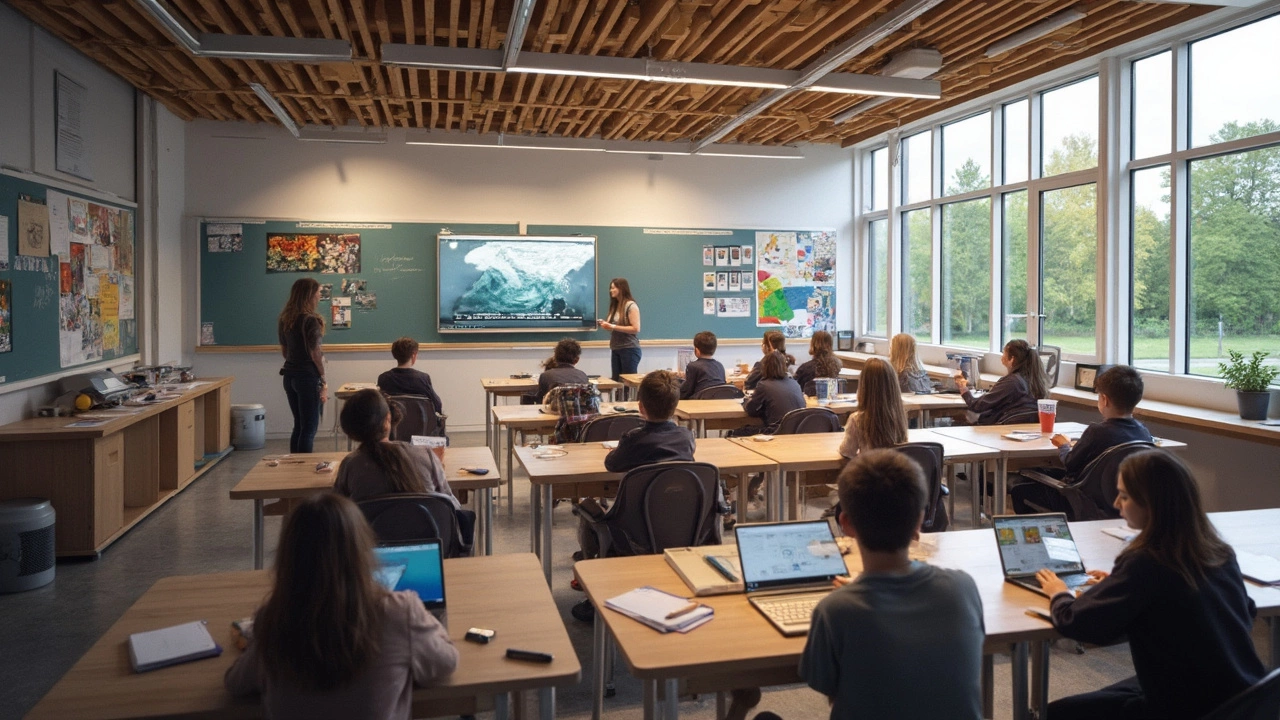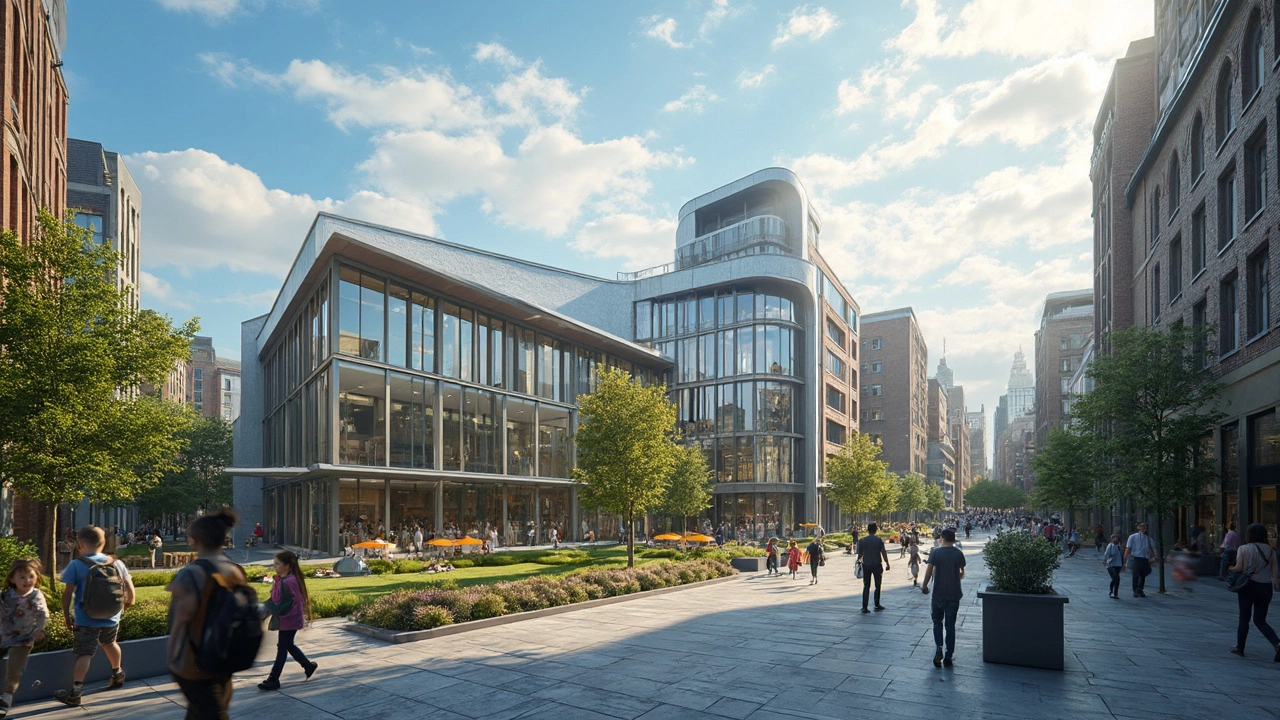Here’s a question you might not have thought about: Are schools more like commercial or industrial buildings? It’s not just a nitpicky detail. Knowing the difference can impact everything from zoning regulations to construction materials.
If you've ever glanced at a school, you know it's not just a jumble of bricks and windows. These buildings are designed to accommodate specific activities and purposes. Most folks lump schools into the commercial category. After all, they serve people, much like malls or offices. Yet, their core function is educational, which requires unique design considerations.
- What Defines a Building's Purpose?
- School Construction Materials
- Zoning Laws and School Buildings
- Impact on Community and Economy
What Defines a Building's Purpose?
You might think a building is just a bunch of walls, floors, and a roof, but there's a lot more at play. What makes a school construction project different from other types is its purpose. So, how does one define a building's purpose?
It usually boils down to its primary use, which dictates everything from design to legal requirements. A school isn't just about housing classrooms. It's also about creating spaces for student interaction, extracurricular activities, and sometimes even community events.
Unlike commercial buildings, where the main goal might be to sell things or provide a service, schools are about education. This means the design must accommodate things like safety regulations, handicapped access, and adequate ventilation for large groups of people. Those oversized cafeterias and gymnasiums you remember? They're vital parts of the plan to meet these activities.
Now, let’s talk about space allocation. Typically, a significant amount of a school’s floor area is dedicated to classrooms and learning environments. But there's more. Schools like to include multipurpose rooms, labs, and even quiet study areas. Each space is dialed in to enhance learning, something that’s not always a focus in commercial or industrial structures.
Financials also play a role in purpose definition. Public funding often shapes what gets built or renovated. Unlike commercial ventures that rely on profit, schools are commonly funded by taxpayer money, making budgeting and planning incredibly significant.
All these factors combined make a school much more than a building with a few classrooms. It’s a purpose-driven structure focused squarely on education, which is why it's often seen as a specialized type of commercial construction with a unique set of challenges and rewards.
School Construction Materials
When it comes to building a school, you’ve got to think beyond just keeping students sheltered from the rain. It’s a big puzzle with tons of pieces, mainly involving key construction materials designed for safety, durability, and function.
First off, let's talk commercial buildings and schools. Many educational facilities use a mix of concrete and steel. Why's that? Because they gotta withstand not just time, but wear and tear from thousands of students. Picture kids running down hallways and heavy foot traffic—these materials can take a beating!
Then there’s the use of sustainable materials. These days, everyone seems to be jumping on the green bandwagon, and schools are no different. Schools might incorporate recycled steel or eco-friendly insulation. Aiming for green certifications like LEED isn’t rare either. It’s not just about helping the planet; energy-efficient buildings can also reduce operating costs.
You might wonder: Are school walls just plain old cinder blocks? Well, that was yesterday’s news. Thanks to advanced tech, modular wall panels and even 3D-printed elements are becoming a thing. These can make construction quick and tweak-able, perfect if you're dealing with ever-changing educational needs.
Let's throw in some numbers here. Just as an example, consider that using high-performance concrete can improve energy efficiency by about 30%. That's a big deal over years of usage. Keeping utility bills low while creating a comfy environment is a win-win.
And don't forget the importance of acoustics. Schools aren’t the quietest places, and rightfully so. To manage noise, acoustic panels and specially designed ceilings help lessen the chaos, allowing students to focus more in class.
So, when you see a school building, remember it’s not just any industrial structure. It's a blend of the right materials mixed with smart design—because teaching requires its own kind of performance space.

Zoning Laws and School Buildings
Understanding how zoning laws interact with school construction isn't exactly dinner table talk, but it's crucial. Local governments use zoning laws to dictate how land in certain areas can be used. They set parameters for what can be built and where, essentially separating commercial, residential, and industrial structures.
So where do schools fit in? They're generally categorized under 'Institutional' zoning. This means they're special cases that don't quite fit into the neat boxes of commercial or industrial zones. This classification ensures schools get the necessary amenities and infrastructure, like proper drop-off zones and sufficient utilities.
But not all areas are school-friendly by default. To set up a school, builders often square off with local zoning boards to tweak existing rules or create exceptions. They need to consider traffic patterns, environmental impacts, and the effect on the surrounding community. Take, for instance, how schools near residential areas usually have stricter noise guidelines and specific hours of operation.
Here's a little nugget of info: In some towns, schools can temporarily or permanently use land designated for commercial buildings. This flexibility helps accommodate growing communities without waiting years for new zoning regulations to catch up. It's a classic case of bureaucracy meeting flexibility.
Ultimately, understanding zoning laws for schools isn't just for developers. Whether you're involved in city planning, real estate, or just a curious cat, knowing how these regulations work can be a real game-changer for your perspective on community development.
Impact on Community and Economy
Schools play a huge role not just in shaping young minds but also in contributing to the local economy and community. These educational facilities create jobs, both during their construction and operational phases. Think of all the teachers, administrative staff, and maintenance workers employed in a single school. Plus, the ripple effect benefits local businesses like restaurants, bookstores, and supply shops.
Building a school takes a bunch of resources, and that's where commercial construction techniques come in. From sourcing materials to hiring construction firms, a new school project can pump significant money into the local economy. In regions where schools are being constructed or renovated, you often see a noticeable uptick in economic activity.
An added bonus? Schools often become community hubs. Don’t underestimate the social benefits of schools as places for community events, meetings, and even local elections. According to the National Center for Education Statistics,
"Schools function as de facto community centers, offering resources and space to the public for a range of activities."This multi-use aspect boosts the school's value to the community beyond just educational purposes.
But don't forget about the long-term gains. Well-constructed schools can increase property values in the area. Families generally prefer to move to neighborhoods with good schools, widening the tax base, which can lead to better funding for public services.
All said and done, schools do more than educate—they're crucial to community vitality and economic well-being. From drawing jobs to being social anchors, their influence goes beyond just being places of learning.
